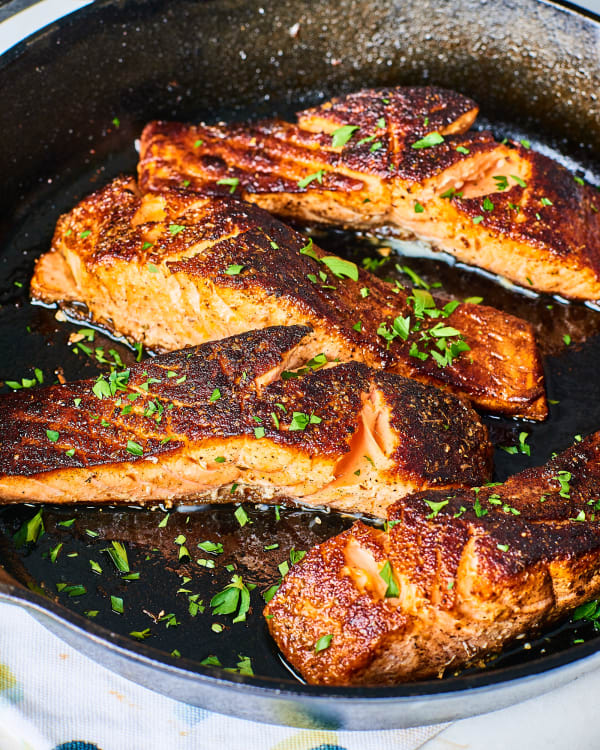 Minute Blackened Salmon
Minute Blackened Salmon
Serves 4
Prep time: 5 minutes ; cooking time: 8 minutes to 10 minutes
- 1 tablespoon plus 1 teaspoon sweet paprika
- 1 teaspoon garlic powder
- 1 teaspoon dried oregano
- 1 teaspoon kosher salt
- 3/4 teaspoon cayenne pepper
- 2 tablespoons olive oil
- 4 (6-ounce) skin-on salmon fillets
- 1 medium lemon, cut into wedges
Place
the paprika, garlic powder, oregano, salt, and cayenne in a shallow
bowl or plate and stir to combine. Press the flesh side of each salmon
fillet into the seasoning to evenly coat it. Alternatively, you can pat
the seasoning mixture evenly onto the flesh side of each salmon fillet.
Heat
the oil in a large nonstick or cast iron skillet over medium until
shimmering. Add the fillets, skin-side up, and cook until blackened,
about 3 minutes. Flip the fillets and continue to cook until cooked
through to your liking, 5 to 7 minutes depending on the thickness of
your fillets. If the skin is starting to burn before the fillets are
cooked, turn the heat down to medium-low. If the fillets are extra thick
(1 1/2 to 2-inches thick in the middle), you may need to turn the
fillets on their sides for a minute on each side to cook them through.
An instant-read thermometer into the middle of the thickest fillet
should register 120°F to 130°F for medium-rare or 135°F to 145°F for
more well-done. Transfer the fillets to individual plates and serve with
lemon wedges.